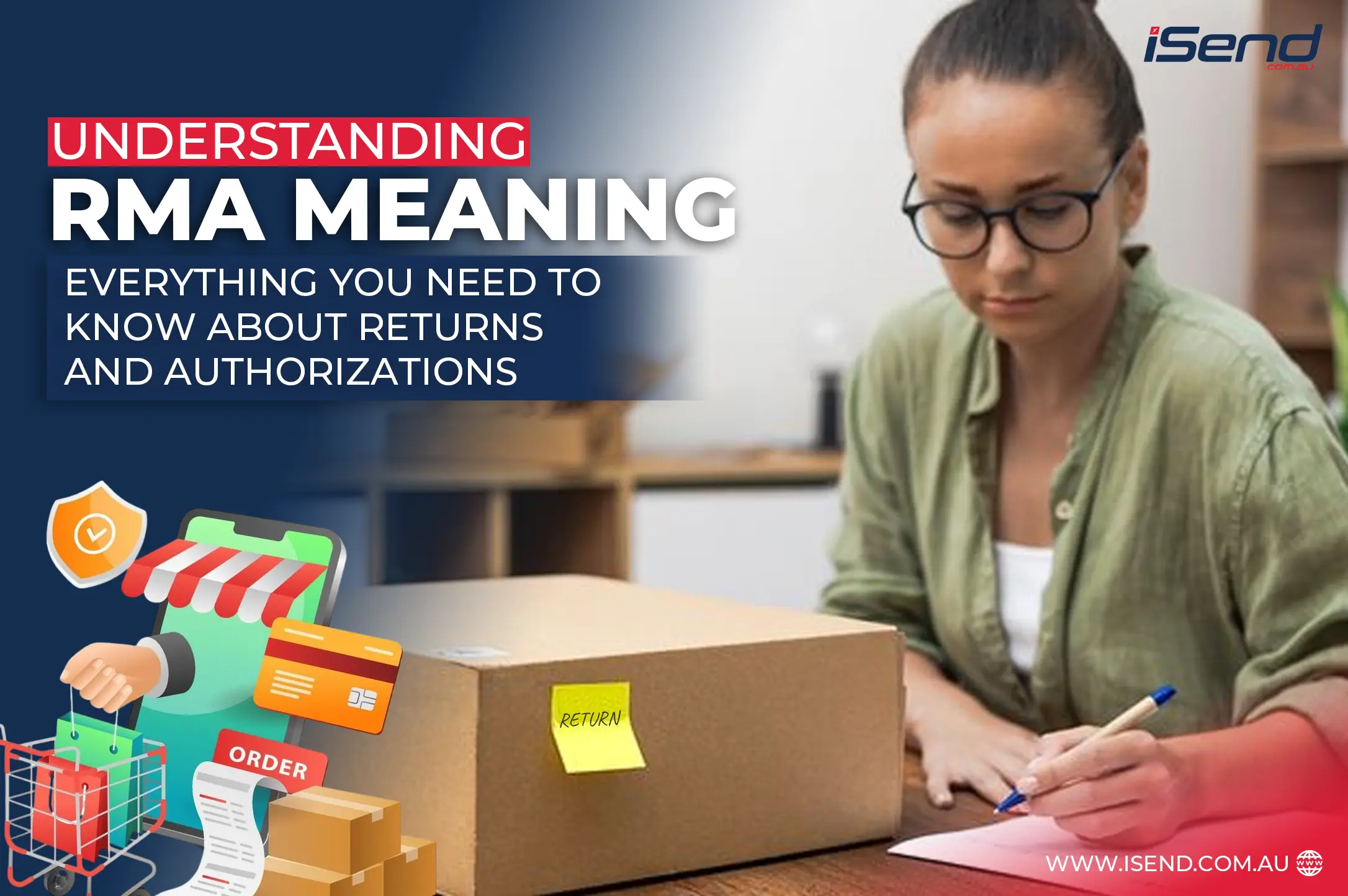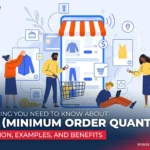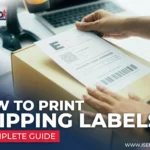When you purchase a product and something goes wrong, you tend to go back and replace, repair, or remove it. This is where RMA is applicable. Are you curious about – what is RMA or What does RMA refer to?
RMA meaning Return Merchandise Authorisation. It is a procedure undertaken by sellers and manufacturers to authorise and monitor product refunds.
This guide will describe the meaning and how RMA works, its importance, and how businesses can use the services of companies such as iSend to deal with it easily.
What is RMA?
RMA stands for Return Merchandise Authorisation. RMA process meaning implies customers can request a refund for a product. Before returning the product, the customer should seek authorisation and receive an RMA number from the seller.
- RMA return meaning – Approved with assigned RMA number return process.
- RMA retail meaning – Stores and eCommerce websites implement RMA systems to process returns professionally
- RMA number – This special number is assigned to identify and locate the returned request.
In simple terms, RMA is a ticket system for returns.
How RMA Works
The RMA process is straightforward. It enables customers to send back a product in a coordinated and approved manner. The customer does not randomly send the item back but seeks the seller’s approval first. After that is accepted, they are given an RMA number that serves as a ticket for the refund.
The seller can use this number to locate the product and trace the request. The customer then follows the return instructions, returns the item, and awaits a refund, repair, or replacement. This system will safeguard both parties. Customers receive an assurance of how to return the items without any misunderstanding.
Companies remain systematic and eliminate fraud or lost packages. That is why the meaning of RMA returns is so relevant in retail and e-commerce nowadays; it ensures that the processes will be smooth, fast, and fair.
The Complete RMA Process Step by Step
A successful RMA retail meaning signifies clear communication and proper tracking. Here is how it works from start to finish.
Step 1: How Customers Initiate a Return Request Effectively
The RMA process meaning is crucial for understanding how product returns are managed.
Any RMA return process starts with contacting the seller to ask permission. This may be achieved through email, portal, or support form.
To make your request effective:
- Give the order number. It assists the seller in recognising what you have bought.
- Include images or evidence of malfunctioning. Explain the reasons why you desire to return the item.
- Choose what you want done- Refund, replacement, or repair.
Good communication at this point accelerates the approval process and helps the rest of the RMA process flow as expected.
If your business uses Shopify or WooCommerce shipping solutions, integrating RMA tracking tools can make this step seamless.
Step 2: Approval and Receiving Your Unique RMA Number
After the seller reviews your return request, he grants an RMA number. This number is vital in the easy processing of your refund. It ensures that your product is correctly tracked and attributed to your request, eliminating errors or delays.
The benefits of having an RMA number include:
- Correlate your product with your request – Everything correlates to your request to process it faster.
- Helps warehouse or service teams determine the item – There is no misunderstanding of what product is being returned.
- Avoids misplacement – Minimises the risk of the packages being lost in transit.
The absence of an RMA number slows down the processing of returns. It may result in rejections or poor treatment, frustrating customers and sellers.
Step 3: Following Return Instructions for a Smooth Process
After receiving your RMA number, the seller will provide comprehensive instructions on ensuring your returns are timely and done correctly. These measures will come in handy to avoid procrastination or confusion.
Key instructions usually include:
- Proper packaging: Pack the products safely so they are not damaged during transportation.
- Add accessories or documents: Include any manuals, receipts, or parts.
- Correct courier or shipping label: Some sellers include a prepaid label or provide their carrier of choice.
- Indicate the RMA number clearly: Provide the RMA number on the package so it can be easily recognised.
Step 4: Return of the Product to the Seller.
After you have your RMA number and the package ready, it is time to send the product back. Proper shipping ensures the item arrives at the seller safely and without any delays.
Tips for smooth shipping:
- Shipment method provided – Instructions on the shipping method are to be followed.
- Prepaid labels – In case one is given by the seller, affix it.
- Shipping provided by the customer – Select an efficient courier if the seller does not provide a label.
- Retain the tracking number -This enables you and the seller to track the shipment to the end.
Check out iSend’s blog on printing shipping labels to simplify the return process.
These steps clearly guarantee that your return gets to the seller without complications.
Step 5: Processing the Return, Refund, or Replacement
Once the seller gets your returned product, they inspect it to ensure it is within the return policy. When they check them, they process your request.
Common outcomes include:
- Refund- Money has been refunded to your account.
- Replacement – A new product is dispatched in the form of a replacement.
- Repair – The product is repaired, usually in the case of electronics or appliances.
Businesses using iSend’s logistics solutions benefit from automation, tracking, and faster refund cycles.
The RMA process effectively and equally processes returns. Proper documentation, an RMA number, and adherence to instructions can facilitate resolving and reducing errors.
Why RMA is Important: Benefits for Customers and Businesses
A well planned and executed RMA system ensures the return process is easy, straightforward, and stress-free for all concerned. It secures the seller and the buyer and ensures everything is organised and traceable.
| For Customers | For Businesses |
| Easy and clear return process | Organized return management |
| Proof of request through RMA number | Reduces fraud or fake claims |
| Faster refunds or replacements | Better tracking and documentation |
| More trust in the brand | Higher customer satisfaction |
Understanding RMA and Insurance: Protecting Products and Business Interests
Many businesses use RMA insurance to protect themselves and their customers when returning goods. Returns may also cause a loss due to damaged goods, delivery problems, or fraud. RMA insurance covers such risks, ensuring that the company and the customer do not lose money.
To businesses, RMA insurance is a source of peace. If a product is lost during shipping back, the insurance would cover damaged products and replacement repairs. It also aids in safeguarding against fraudulent claims since the RMA system maintains a record of all the return requests and packaging and shipping data. This paperwork minimises conflict and possible losses.
RMA insurance offers customers some security in safely returning items to the company. They can get a replacement of a damaged package or a refund without incurring additional expenses.
A combination of an appropriate RMA process and insurance would establish a secure and transparent system. Products would be insured, returns would be accurately monitored, and transactions would be smoother and safer for both parties.
How iSend Helps You Manage and Track RMA
iSend, a trusted shipping and logistics company, simplifies the RMA journey for retailers and customers.
Here’s how:
- Automated return labels make it easy for customers to ship products back.
- Tracking updates allows businesses to monitor every return in real time.
- QR code or barcode-based RMA number system improves accuracy.
- Secure and insured transportation protects goods during transit.
- A centralised dashboard helps sellers manage multiple RMA requests without confusion.
Whether you handle eCommerce, electronics, fashion, appliances, or accessories, iSend ensures that your RMA process is fast, safe, and professional.
Conclusion
Now that you understand RMA’s meaning, you can see that it is not just a return but a structured communication between customer and seller. A proper RMA process ensures that returns are approved, tracked, and resolved fairly. It protects customers from confusion and protects businesses from fraud or loss.
If you run a business or shop online frequently, always make sure:
- You request an RMA number before returning anything
- You follow the given instructions properly
- You track the shipment until completion
When you want to handle RMAs easily, you can collaborate with a logistics specialist such as iSend to make your returns process hassle-free and safe.
FAQ
- What does RMA stand for?
RMA is the acronym for Return Merchandise Authorisation. It is a process of approval that the customers should undergo before returning a product to the seller. It makes the return request valid, well-tracked, and carried out without misunderstandings and delays between the business and the buyer.
- Why is an RMA number significant?
An RMA number is a special code for your return request. It assists the seller in quickly determining your case, finding your product, and making a faster refund or replacement. Otherwise, the warehouse staff might delay, lose, or reject your request.
- Can I return an item without an RMA number?
Most firms do not receive returns without an approved RMA number. When you return a product without permission, it can be rejected or not processed. Obtaining an RMA number will ensure the return section acknowledges and processes the package correctly.
- What happens after I get an RMA number?
Upon getting your RMA number, wrap the product and envelop it with the number, either writing or gluing it on the package. Ship it back according to the instructions and wait until it is confirmed. The return policy will give the seller the option to refund or replace.





